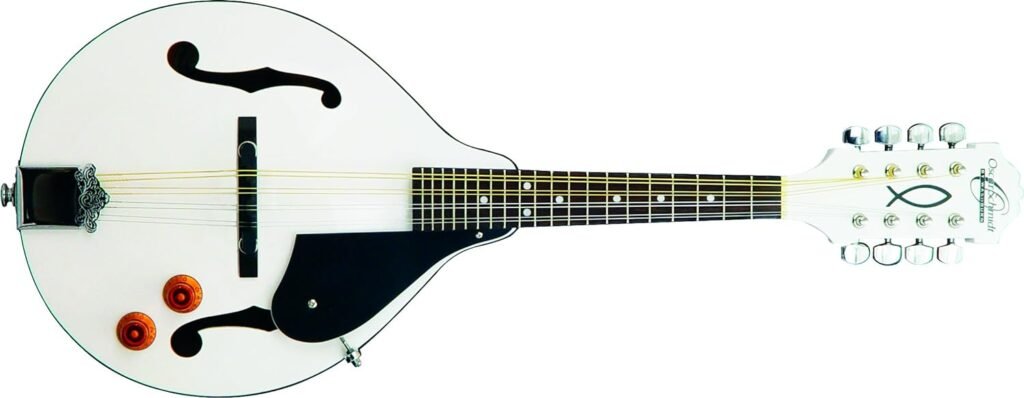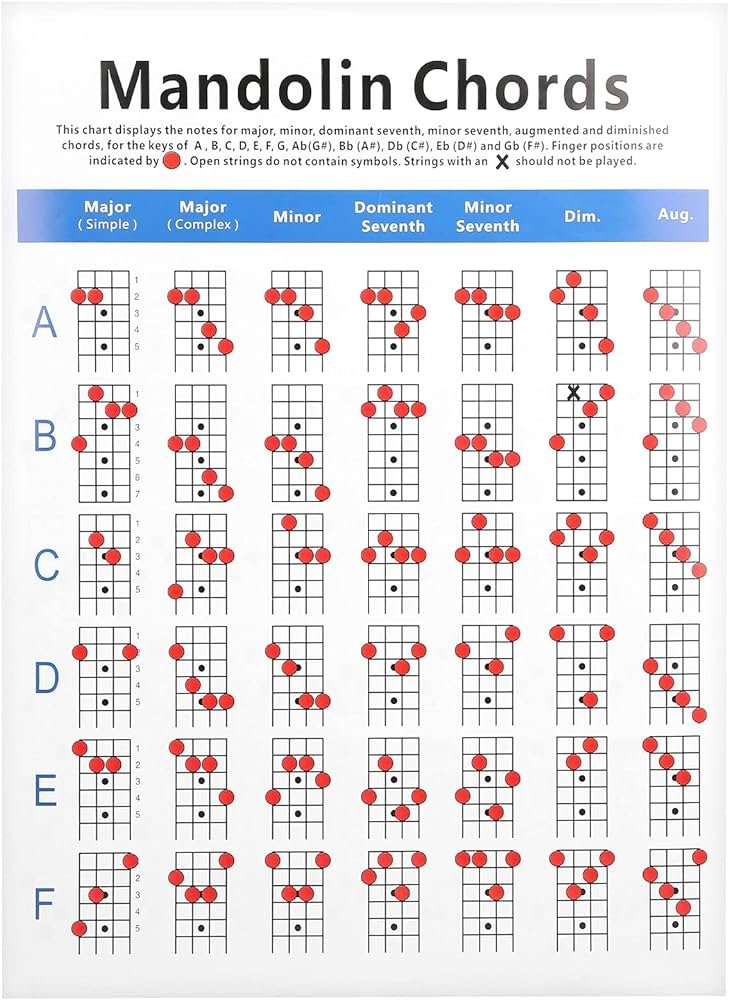Mandolin Chords Every Beginner Should Know

A few basic Mandolin chords are the first things that any novice learning the mandolin should get familiar with. These key chords serve as the beginning of your musical journey, laying the basis for a myriad of melodies and compositions. Even though the mandolin has a unique sound, learning these chords helps you get from being curious to being proficient.
Beginning with the fundamental open chords (G, C, D, and A), beginners can establish a solid foundation in chord transitions and finger positioning. You may develop your dexterity and muscle memory by strumming along to some easy songs using these chords. As you advance to increasingly complicated chords like D7, Am, and E major and minor, your harmonic palette widens and you may play a wider variety of tunes from other genres.
Gaining an understanding of chord-building principles allows you to access variants such as reduced and suspended chords. You can experiment with a wide variety of chords, but these fundamentals put you on the right track to mastering the mandolin. You’ll enjoy strumming well-known songs and exploring the countless musical options that await you as your fingers become used to the frets and your ears tune in to the mandolin’s distinct tone.
Mandolin Chords: Overview

A chord is, as you presumably well know, a grouping of three or more notes performed simultaneously.
Chords on mandolins may appear a little cryptic at first.
Numerous musical genres employ the mandolin, each with a somewhat distinct approach.
We’ll limit ourselves to simple mandolin chords in this article. You’ll be able to perform many folk and popular tunes using these chords.
Mandolin Chord Diagram Reading
The mandolin’s symmetrical standard tuning, which is arranged in open fifths, is one of its benefits. With this special tuning ability, you may use the same chord formations on all strings.
To demonstrate, think of depressing the first string at the third fret and the second string at the second fret. An easy placement results in a chord in G major. The adaptability provided by the mandolin’s tuning symmetry is demonstrated when this form is extended to the second and third strings, creating a C major chord.
Customized Tuning

First, it’s crucial to understand that mandolin tuning is often done symmetrically, or in open fifths.
As so, the same chord form may be played on other strings.
To help illustrate, here’s an example: to play G Major, press the second string on the second fret and the first string on the third fret.
This same shape may be moved down one string to C Major by fretting the second and third strings.
Essentially, the mandolin is tuned G-D-A-E, which is the standard violin tuning.
However, because the mandolin typically has eight strings, how can you tune it exactly like a violin?
All of the strings are set to the same pitch, though. It is, therefore, tuned G-G-D-D-A-A-E-E, assuming you take into account each individual string.
Double strings are added to mandolins to produce a richer tone and longer resonance.
Major Chords
Playing open strings on the mandolin neck creates chords known as open mandolins.
You can play major open chords rather easily because of the way your mandolin is tuned.
We’ve previously covered how to play C Major (move that identical form down one string) and G Major (the second string, second fret, and the first string, third fret).
Additionally, it would be best to use the G string, the second fret, the E string, and the second fret (with the D and A strings open) to play D Major.
Here is a mandolin chord chart that shows you what major chords look like:
You’ll be pleased to learn that these three chords may be used to perform a lot of simple folk melodies. Consequently, it’s reasonable to conclude that the most often used beginning mandolin chords are G, C, and D.
Minor Chords
You must adjust one note in each of the aforementioned chords to modify the chord quality to a minor.
Therefore, drop one fret with your index finger to play in G Minor. The same holds for D and C minors.
I mean, it’s not that difficult?
To make D Minor feel more natural, the only thing to keep in mind is to alter the fingering.
You may use your second finger to play the G string, which is the second fret, and your index finger to play the E string, which is the first fret.
How to Play Chords on a Mandolin

We demonstrated how to play open Major and Minor chords in the preceding paragraph.
Furthermore, because the mandolin is tuned symmetrically, you can simply shift different chord forms around the neck because the chords are moveable.
There’s no shortage of chords to learn. There’s no rush, though. First, you should be at ease with the fundamentals.
Strumming chords is a great method to get started on the mandolin. Some strings need you to strum while holding down the strings with your left-hand fingers.
It will all become less abstract and easier if you get to know mandolin chord charts. All you have to do is get started.
Attempt to commit fundamental Major and Minor chords to memory. Then, practice them by alternating between them. Strive to be as precise as you can.
Practice until you can make the changes easily.
While errors are inevitable from time to time, chord playing ought to feel effortless and natural. They’re not in your hands quite yet if you have to think about them too much.
Never overlook the fundamentals, even when you begin learning tunes. You can’t help but get better in coordination, technique, and rhythm by practicing chords.
Gaining confidence in the fundamentals of the mandolin can help you pick up new material faster.
Faq
- What are the fundamental mandolin chords?
G, C, and D are the mandolin’s fundamental chords. Many folk tunes for beginners use these three chords. - Mandolin vs guitar: Which is harder?
It’s not more difficult to learn and play the mandolin than the guitar. There is a straightforward explanation for this: the mandolin has fewer strings. You need to learn more chords for an instrument the more strings it has.